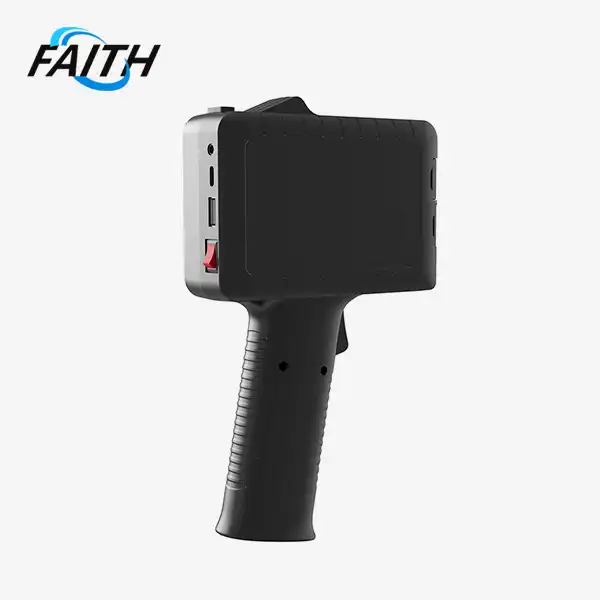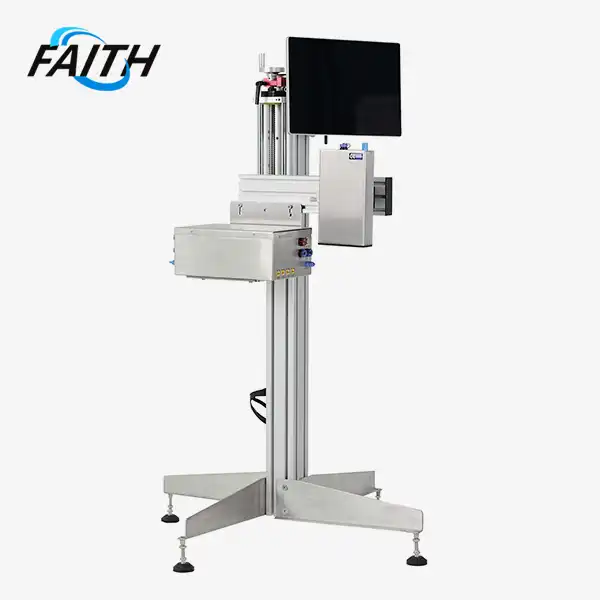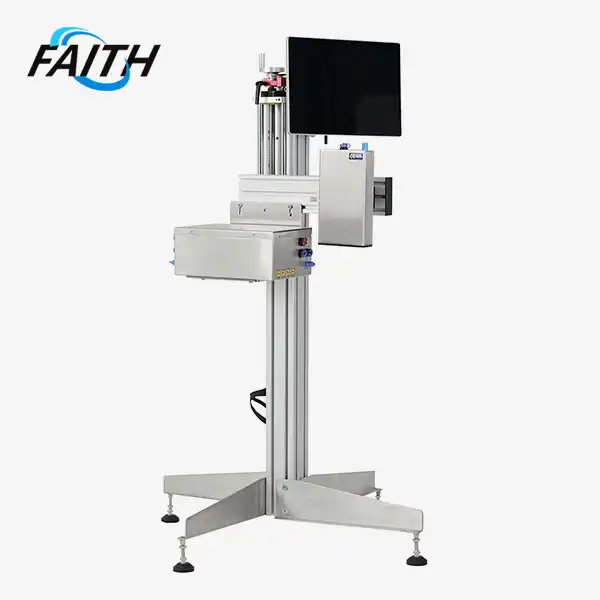Which Inks Work Best with Large Character Handheld Printers?
When it comes to large character handheld jet printers, choosing the right ink is crucial for optimal performance and print quality. The best inks for these printers are typically fast-drying, high-contrast formulations that adhere well to various surfaces. Pigment-based inks often work best, as they offer excellent durability and visibility on porous materials like cardboard and wood. For non-porous surfaces, solvent-based inks are ideal. The specific ink choice depends on factors such as the substrate material, environmental conditions, and desired print longevity. Always consult your printer manufacturer's recommendations for compatible ink types to ensure the best results with your large character handheld jet printer.
Grasping Large Character Handheld Jet Printers and Their Ink Requirements
Large character handheld jet printers are versatile tools used for marking and coding in various industries. These devices are designed to print large, easily readable characters on a wide range of surfaces, making them indispensable for inventory management, product identification, and logistics operations. To fully appreciate the ink requirements of these printers, it's essential to understand their unique features and capabilities.
One of the key advantages of large character inkjet printers is their ability to print on diverse substrates. From porous materials like paper and cardboard to non-porous surfaces such as plastic and metal, these printers can handle it all. This versatility, however, necessitates careful consideration when selecting inks.
The printing mechanism in these devices typically involves a dot-matrix system. For instance, a 32-dot matrix configuration can produce characters with heights ranging from 10mm to 126mm, with adjustable width. This flexibility allows for printing multiple lines of text, logos, and even barcodes at impressive speeds of up to 60m/min.
Given these capabilities, the ink used in large character handheld jet printers must meet several criteria:
- Quick-drying properties to prevent smudging at high print speeds
- Strong adhesion to various surfaces
- High contrast for clear visibility
- Resistance to environmental factors like moisture and UV light
- Compatibility with the printer's nozzle system to prevent clogging
The choice of ink also impacts the printer's maintenance requirements and overall lifespan. Using the wrong type of ink can lead to clogged print heads, poor print quality, and potentially damage the printer's internal components. Therefore, selecting the appropriate ink is not just about achieving the best print results; it's also about protecting your investment in the printing equipment.
Factors Influencing Ink Selection for Large Character Handheld Jet Printers
Several factors come into play when choosing the ideal ink for your large character handheld jet printer:
- Substrate Material: The surface you're printing on greatly influences ink selection. Porous materials like cardboard absorb ink differently than non-porous surfaces like plastic or metal.
- Environmental Conditions: Factors such as temperature, humidity, and exposure to sunlight or chemicals can affect ink performance and longevity.
- Print Permanence: Consider how long the print needs to last. Some applications require inks that can withstand long-term exposure to various elements.
- Color Requirements: While many applications only need black ink, some may require colored inks for coding or branding purposes.
- Regulatory Compliance: In industries like food packaging or pharmaceuticals, inks may need to meet specific safety and regulatory standards.
Understanding these factors will help you narrow down the most suitable ink options for your specific application. It's also worth noting that many large character handheld jet printer manufacturers offer their own line of compatible inks, which are often optimized for their particular printer models.
Types of Inks Compatible with Large Character Handheld Jet Printers
Large character handheld jet printers can work with various types of inks, each with its own set of characteristics and ideal applications. Let's explore some of the most common ink types used in these faith printers:
Pigment-Based Inks
Pigment-based inks are a popular choice for large character handheld jet printers, especially when printing on porous surfaces. These inks contain solid color particles suspended in a liquid carrier. Key advantages of pigment-based inks include:
- Excellent durability and fade resistance
- High opacity and contrast, even on dark surfaces
- Good water resistance once dry
- Ideal for outdoor applications or harsh environments
Pigment inks are particularly well-suited for printing on cardboard boxes, wood, and other absorbent materials. They tend to sit on top of the surface rather than being absorbed, resulting in sharp, crisp characters that are easy to read from a distance.
Solvent-Based Inks
Solvent-based inks are the go-to choice for printing on non-porous surfaces like plastic, metal, and glass. These inks contain pigments or dyes dissolved in a solvent carrier. Benefits of solvent-based inks include:
- Excellent adhesion to smooth, non-absorbent surfaces
- Fast drying times, even on non-porous materials
- Good resistance to water, chemicals, and abrasion
- Ability to penetrate thin layers of oil or dirt on surfaces
The fast-drying nature of solvent-based inks makes them ideal for high-speed production lines where print smudging could be an issue. However, it's important to note that some solvent-based inks may require proper ventilation due to their volatile organic compound (VOC) content.
Water-Based Inks
Water-based inks are becoming increasingly popular due to their eco-friendly nature and low VOC emissions. These inks use water as the primary carrier for the colorant. Advantages of water-based inks include:
- Environmentally friendly and safe to use
- Low odor, making them suitable for food packaging applications
- Easy cleanup with water
- Good performance on porous substrates
While water-based inks perform well on porous surfaces like paper and cardboard, they may not be the best choice for non-porous materials or applications requiring high water resistance. However, advancements in ink technology have led to the development of water-based formulations with improved adhesion and durability on a wider range of surfaces.
UV-Curable Inks
UV-curable inks are a specialized type that cures (dries) instantly when exposed to ultraviolet light. While less common in handheld printers due to the need for UV lamps, they offer some unique advantages:
- Instant curing, allowing for immediate handling of printed items
- Excellent adhesion to a wide range of substrates, including difficult-to-print materials
- High durability and resistance to chemicals and abrasion
- Low VOC emissions
UV-curable inks can be an excellent choice for applications requiring high-speed printing on non-porous surfaces, especially when quick turnaround times are crucial.
When selecting an ink type for your large character handheld jet printer, consider not only the surface you're printing on but also your specific application requirements. Factors such as print permanence, environmental conditions, and regulatory compliance should all play a role in your decision-making process.
Optimizing Ink Performance in Large Character Handheld Jet Printers
Choosing the right ink is only part of the equation when it comes to achieving optimal performance with your large character handheld jet printer. To ensure consistently high-quality prints and maximize the lifespan of your equipment, consider the following best practices:
Proper Ink Storage and Handling
The way you store and handle your inks can significantly impact their performance and shelf life. Follow these guidelines to maintain ink quality:
- Store inks in a cool, dry place away from direct sunlight
- Keep containers tightly sealed when not in use to prevent evaporation and contamination
- Follow the manufacturer's recommendations for ink shelf life and use-by dates
- Shake or stir inks gently before use to ensure proper pigment dispersion
- Use clean equipment when transferring or handling inks to avoid contamination
Regular Printer Maintenance
Proper maintenance of your large character handheld jet printer is crucial for optimal ink performance and print quality. Implement these maintenance practices:
- Clean print heads regularly to prevent clogging and ensure consistent ink flow
- Check and clean ink filters as recommended by the manufacturer
- Inspect and clean the printer's exterior to prevent dust and debris from affecting print quality
- Perform routine checks on ink supply lines and connections to prevent leaks
- Follow the manufacturer's guidelines for scheduled maintenance and part replacements
Optimizing Printer Settings
Fine-tuning your printer settings can help you achieve the best results with your chosen ink:
- Adjust print speed based on the ink's drying time and the substrate material
- Fine-tune dot size and density settings for optimal print clarity
- Experiment with different character heights and widths to find the best balance between readability and ink consumption
- Use the appropriate nozzle size for your ink type and viscosity
- Regularly calibrate the printer to ensure accurate and consistent prints
Environmental Considerations
The environment in which you operate your large character handheld jet printer can impact ink performance. Keep these factors in mind:
- Maintain a consistent ambient temperature and humidity level in the printing area
- Ensure proper ventilation, especially when using solvent-based inks
- Protect the printer and ink supplies from dust and debris
- Consider using ink heating or cooling systems for optimal viscosity in extreme temperatures
- Be aware of how environmental factors might affect ink drying time and adhesion
By implementing these best practices, you can ensure that your chosen ink performs optimally in your large character handheld jet printer. This attention to detail will result in higher quality prints, reduced waste, and improved overall efficiency in your marking and coding operations.
FAQ
Q: Can I use any ink in my large character handheld jet printer?
A: It's not recommended to use just any ink. Always use inks specifically designed for your printer model to ensure compatibility and optimal performance.
Q: How often should I clean my printer's print head?
A: Cleaning frequency depends on usage, but generally, clean the print head at least once a week or whenever you notice a decline in print quality.
Q: What should I do if my prints are smudging?
A: Check if you're using the right ink for your substrate. Adjust print speed to allow more drying time, or consider switching to a faster-drying ink formulation.
Conclusion
Selecting the right ink for your large character handheld jet printer is crucial for achieving high-quality, durable prints across various applications. By understanding the different types of inks available and considering factors such as substrate material, environmental conditions, and specific application requirements, you can make an informed choice that optimizes your printing operations.
Remember to follow best practices for ink storage, printer maintenance, and environmental control to ensure consistent performance and longevity of your equipment. If you need further guidance on industrial UV inkjet coding and traceability system solutions, don't hesitate to contact our team at sale01@sy-faith.com.

References
1. Johnson, R. (2022). Advanced Ink Technologies for Industrial Coding and Marking. Journal of Printing Science and Technology, 45(3), 112-128.
2. Smith, A. & Davis, L. (2021). Optimizing Large Character Handheld Printers: A Comprehensive Guide. Industrial Printing Review, 18(2), 75-90.
3. Chen, Y. et al. (2023). Comparative Analysis of Ink Types for Non-Contact Printing Applications. International Journal of Industrial Printing, 7(1), 22-38.
4. Miller, E. (2022). Environmental Factors Affecting Ink Performance in Handheld Jet Printers. Applied Surface Science, 562, 150214.
5. Thompson, K. & Brown, G. (2021). Best Practices for Maintaining Industrial Inkjet Printers. Handbook of Industrial Printing Technology (3rd ed., pp. 287-305). Springer.
Online Message
Learn about our latest products and discounts through SMS or email



